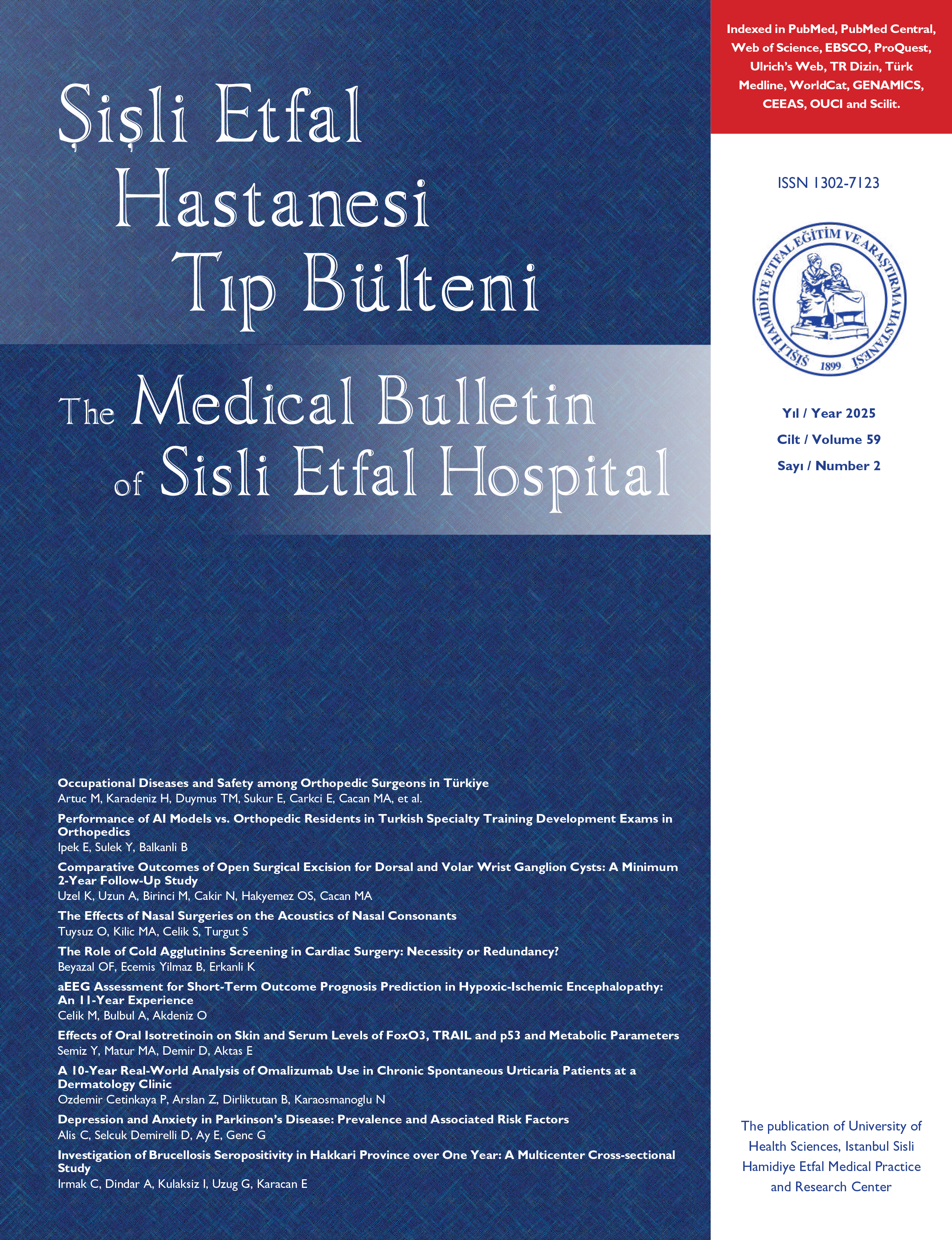
Antibiotic susceptibility of gram negative enteric bacilli isolated from nosocomial infections
Mustafa Gül1, B. Çetin2, A. Gündüz2, Engin Seber21Department of Microbiology and Clinical Microbiology, Kahramanmaraş Sütçü İmam University, Faculty of Medicine, Kahramanmaraş, Istanbul2Department of Infectious Diseases and Clinical Microbiology, Şişli Etfal Training and Research Hospital, Istanbul, Turkey
Objective: This study aimed to determine the antibiotic susceptibility of Gram-negative enteric bacilli isolated from nosocomial infections.
Study Design: Gram-negative enteric bacilli that caused nosocomial infections between June 1998-June 1999 in The Sisli Etfal Training and Research Hospital were taken in to the study. The anitibiotic susceptibility of these bacilli were determined by disc diffusion method.
Results: The distribution of Gram-negative bacilli were; K. pneumoniae 26 (32.5%), E. coli 23 (28.7%), E. aerogenes 9 (11.2%), E. cloacea 7 (8.7%), K. oxytoca 4 (5.0%), enterobacter spp 2 (2.5%), P. mirabilis 2 (2.5%), P. vulgaris 2 (2.5%), C. diversus 1 (1.2%), C. freundii 1 (1.2%), H. alvei I (1.2%), M. morganü 1 (1.2%), E. sakazakii 1 (1.2%). The nosocomial agents were isolated from the specimens as follows; 57 (71.2%), from urine 15 (18.7%) from wound-abscess, 5 (6.2%) from trakeal aspirate, 2 (2.5%) from blood, 1 (1.2%) from cerebrospinal fluid. The susceptibilities of the strains against the antibiotics were as follows; amoxicillin clavulanic acid 20%, cefazolin 28%, cefodizim 53%, ceftriaxone 60%, cefotaxime 60%, cefepim 68%, gentamicin 61%, tob¬ramycin 63%, netilmicin 64%, amikacin 76%, ofloxacin 76%, ciprofloxacin 82%, imipenem 98%, meropenem 97%.
Conclusions: In our study we determined that the most effective antibiotics were carbapenems, followed by quinolones and aminoglycosides.
Hastane infeksiyonu etkeni gram negatif enterik basillerin çeşitli antibiyotiklere duyarlılıkları
Mustafa Gül1, B. Çetin2, A. Gündüz2, Engin Seber21Kahramanmaraş Sütçü İmam Üniversites,i Tıp Fakültesi, Mikobiyoloji ve Klinik Mikrobioyoloji Anabilim Dalı, Kahramanmaraş2Şişli Etfal Eğitim ve Araştırma Hastanesi, Enfeksiyon Hastalıkları ve Klinik Mikrobiyoloji Kliniği, İstanbul
Amaç: Bu çalışmada hastane enfeksiyonu etkeni olarak izole edilen Gram negatif enterik basillerin çeşitli antibiyotiklere duyarlılıklarının saptanması amaçlanmıştır.
Gereç ve Yöntem: Bu çalışmada Şişli Etfal Eğitim ve Araştırma Hastanesi nde 1998 Haziran-1999 Haziran tarihleri arasında hastane infeksiyonuna neden olan Gram negatif enterik basiller incelendi. Basillerin antibiyotik duyarlılıkları disk diffüzyon yöntemi ile saptandı.
Bulgular: Çalışmaya alman Gram negatif basillerin dağılımları; K. pneumoniae 26 (%32.5), E. coli 23 (%28.7), E. aero- genes 9 (Toll.2), E cloacea 7 (%8.7), K oxytoca 4 (%5.0), Enterobacter spp 2 (%2.5), P. mirabilis 2 (%2.5), P vulgaris 2 (%2.5), C diversus 1 (%J.2), C. freundii 1 (%1.2), H. alvei 1 (%1.2), M. morganii 1 (%l.2), E. sakazakü 1 (%1.2)dir. Etkenlerin 57si (%71.2) idrar, 15i (%18.7) yaraabse, 5i (%6.2) trakeal aspirat, 2si (%2.5) kan, li (%1.2) beyin omirilik sıvısı örneklerinden izole edilmiştir. Suşların antibiyotiklere duyarlılıkları; amoksisilinklavulanik asit %20, sefazolin %28, sefodizim %53, seftriakson %60, sefotaksim %60, sefepim %68, gentamisin %6l, tobramisin %63, iletilmişin %64, amikasin %76, ofloksasin %76, siprofloksasin %82, imipenem %98, meropenem %97 oranlarında saptanmıştır.
Sonuç: Çalışmamızda en etkili antibiyotiklerin karbapenemler olduğu, bunları kinolon ve aminoglikozidlerin izlediği gö¬rülmüştür.
Manuscript Language: Turkish



















